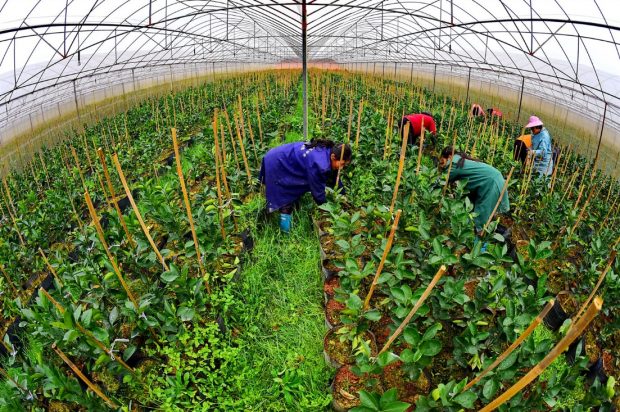
Supply-side reform helps Chinese farmers locate target markets

Chinese farmers are using their wisdom and modern strategies to cater for the market, and such supply-side reform is helping them gaining more profits. Wu Kai, staff from a fruit company in east China’s Jiangxi province has greatly boosted the company’s navel orange sales thanks to the supply-side reform he carried out.
Wu’s company is based in Chengjiang township, Jiangxi’s Xunwu county, a place having a 30-year history of navel orange planting. Almost every household there plants the fruit. However, a small-size navel orange produced in Chengjiang was always neglected by the market due to its size, though it’s of high quality, Wu said. His company used to sell most of these fruits it collected from the farmers to secondary wholesale markets and juice factories at very low prices. A total of 1.5 million kilograms of such small navel oranges were collected by Wu’s company in 2018. However, they were neither sent to the secondary wholesale markets nor the juice factories, but divided at a sorting line of the company. Oranges affected by diseases and pests and those with obvious injuries on the surface area were also kicked out from the fine ones. This new strategy was a result of Wu’s investigation on consumers’ preferences of the fruits’ taste and appearance, a critical step for him to grasp the demand of the market.
Based on random sweetness measurement, the 1.5 million kilograms of small navel oranges went to different market segments under different brands, through both online and offline channels. They created outstanding sales performance a couple of months later. Wu’s company took in revenue of 4 million yuan from the 500,000 kilograms sold on online platforms, and 7 million yuan from the rest sold in offline markets. The total revenue would have stood at only 6 million had the fruits been sold through traditional channels, Wu introduced. “By learning consumers’ demand and categorizing the orange supplies, Wu has both guaranteed the product quality and created due value,” commented Wang Xiaodong, deputy head of Xunwu county. Wu’s practice was exactly a creative attempt on the supply-side structural reform for navel orange sales, Wang noted.
The Chinese government has always attached high importance on agriculture-related issues as China is a major agrarian country. China will focus on supply-side structural reform in agriculture and improve the quality and efficiency of its agricultural product supply, according to the country’s central rural work conference convened in Dec. 2015.
In addition, it will also ensure that the supply, variety and quality of agricultural products meet the needs of consumers, and foster effective supply that is well structured and guaranteed. The success of the small navel oranges is a useful exploration to connect China’s small-scale agricultural production and the massive market. In many regions of China, production is no longer an issue. However, there is still much to improve in the sales sector. That is why the CPC Central Committee proposed to promote in-depth supply-side structural reform in the agriculture sector. One of the important tasks of the reform is establishing a modern agricultural industry system which link both the production and market end of industry, so that the farmers can not only grow quality crops, but also gain decent income.
(People’s Daily)


